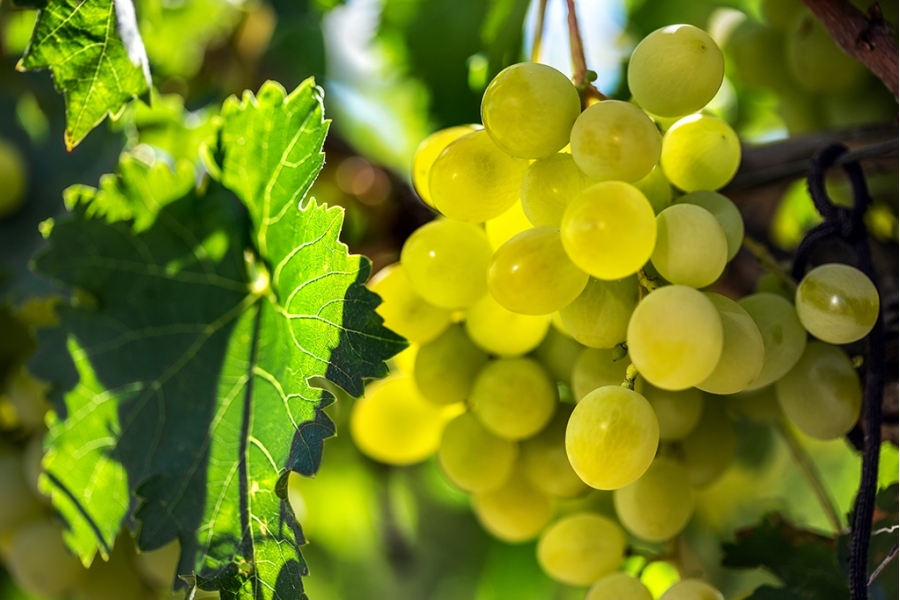
Harold is a bright representative of frost-resistant white grape variety. Table culture was brought out by breeders from Novocherkassk. As a base for creating a qualitatively new grape, scientists used three varieties: "Arcadia", "Summer Muscat" and "Delight". The hybrid of berry culture is popular among winegrowers, despite the fact that it is not officially included in the state register of selection achievements. You can grow culture in any region of Russia.
Content
Grape characteristics
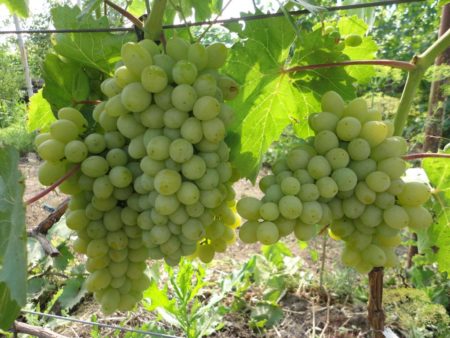
Grape refers to ultra early ripe, from the complete formation of berries and to ripening, 95-100 days pass. At home, in the city of Novocherkassk, it is being collected already at the end of July. In the northern regions, berries ripen from late July and throughout August. Ripe grapes retain their appearance and taste on the bush for 2-3 weeks. The variety belongs to the canteens, so its main purpose is fresh consumption and processing for juice. It is processed into wine when it matures.
Productivity from one bush, subject to proper agricultural practices, is 12-15 kilograms. The plant can withstand temperatures down to -24-25 ° C. In the southern regions, it does not require shelters. In the North and Siberia, grapes can freeze, so shelters are a necessary measure of preserving the culture. Grapes have good resistance to fungal diseases. It perfectly resists the attacks of oidium and mildew.
Grape Description
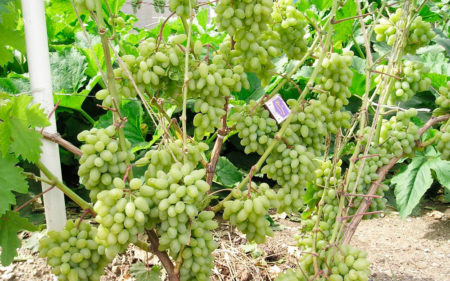
Bushes grow tall, sparse, so annual molding is required. Most of the shoots are fruitful. 1-2 brushes are formed on the vine. The vine in an adult plant is powerful and flexible, painted in a light brown color. Leaves are formed by a heart-shaped, medium size. During the season, shoots mature in full length.
Flowers of berry culture are bisexual. Bunches are tied with a conical or cylindrical shape. The mass of one is 400-700 grams. The density of the hands depends on top dressing and watering. Most often clusters with medium density are formed on the bushes, less often well densified. Berries do not fall, even if they are overripe. Their shape is oval, at the ends it can taper slightly and form a nose. The weight of one berry is 6-7 grams.
The skin is painted in amber color, covered with a small wax coating, which is almost invisible. The density of the peel is high, which protects the berries from the invasion of wasps, cracking. The pulp is practically not fleshy, but very juicy, painted in a light yellow color. In the middle there are 1-3 seeds. The taste is wonderful, the aroma is full, with notes of nutmeg. Berry does not germinate.
Advantages and disadvantages
We got a hybrid not so long ago, but winegrowers have already managed to fully appreciate its advantages and disadvantages. The main advantages of grapes include:
- resistance to fungal diseases;
- non-susceptibility to attacks by wasps;
- transportability over long distances;
- excellent taste;
- high productivity;
- lack of peeling;
- with high humidity, the berries do not crack;
- frost resistance;
- short ripening period.
The disadvantages of the variety:
- a tendency to excessive formation of fruiting shoots, which may affect the quality of the crop;
- berries are very attractive to birds. To preserve the fruit, it is necessary to protect the bunches with a net.
Planting and grape care
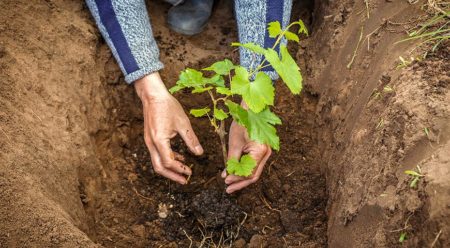
Sapling of berry culture should have 3-4 roots. Pick the cuttings without damage and any signs of manifestation disease. The bushes of the plant are vigorous, so place them at a distance of 2-3 meters from other grapes, trees, shrubs. Plant "Harold" in the spring according to the classical method:
- Prepare a pit for landing since the fall. Dig a hole 90 centimeters deep and 80 centimeters in diameter. At the bottom, lay the drainage of their large gravel. Mix the extracted soil with a bucket of humus, peat and mineral fertilizers (50 grams of superphosphate and 50 grams of potassium sulfate). Pour the resulting substrate back, pour 30 liters of water.
- In the spring, dig a hole, leave a pillow from fertile earth on the drainage. Install a peg in the middle of the pit. It is necessary for tying a plant as it grows.
- Before placing the seedling in the pit, cut 10-15 centimeters from the length of the roots.
- Place a seedling and ground it, compacting it. Pour the soil to the basal neck. After which, pour plenty of water. Consumption per bush is 40 liters. Irrigate not only under the stalk, but also nearby.
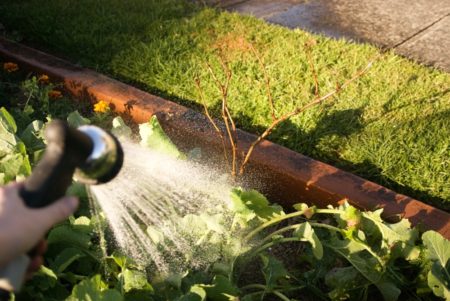
Care for berry culture does not imply special skills in viticulture. In order for him to grow strong and healthy, you should stick to simple activities.
| Event | Description |
| Watering | Water grapes starting in April. Make the last water-loading irrigation in November (water consumption 70-100 liters). The frequency of watering is every 2 weeks. During the ripening period, stop irrigation. Water consumption per bush is 40 liters. |
| Mulching | To make the moisture evaporate less, mulch the borehole with humus, peat, and straw. |
| Winter shelter | Cover the bushes if you live in central Russia, the North and Siberia. In the South, grapes do not freeze. |
| Molding trimming | Cut the bushes in autumn or spring, so that no more than 30-35 eyes remain on the bush to avoid overloading. |
| Fertilizer application | In spring, add nitrogen (20 g), potash (40 g) and phosphorus (40 g) top dressings. In the fall, under the bush make humus, two buckets. |
| Disease protection | Despite the high resistance of Harold to diseases, spring treatment with one percent Bordeaux fluid. |
Reviews
Gardeners appreciate the Harold grapes for its short ripening period. Problems with berry culture do not arise. As vine growers note, the plant is not susceptible to disease. Bushes grow very much. To avoid bush thickening, gardeners recommend cutting off stepsons every week.
Grapes have established themselves as sustainable and productive. His care is standard. Stable fruiting year after year. The taste and aroma of berries will pleasantly surprise even the most demanding gourmet.




 Non-covering winter-hardy grape varieties for Moscow region
Non-covering winter-hardy grape varieties for Moscow region How to keep the vine in winter
How to keep the vine in winter When can I transfer grapes to another place in the fall
When can I transfer grapes to another place in the fall How to cover and prepare grapes for the winter in the suburbs
How to cover and prepare grapes for the winter in the suburbs